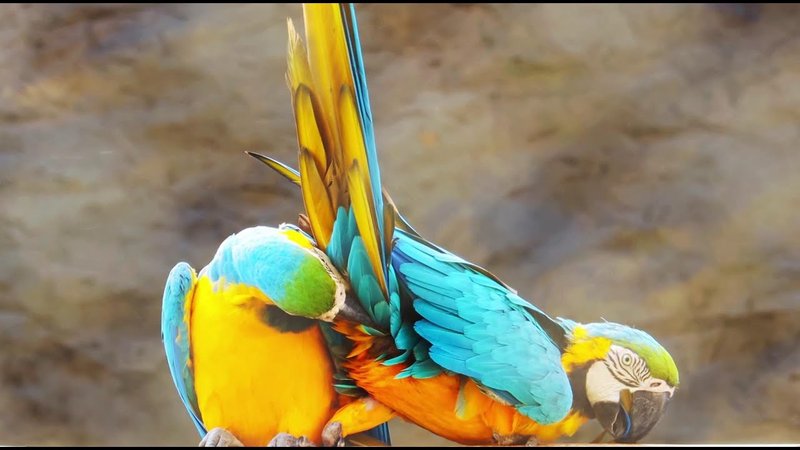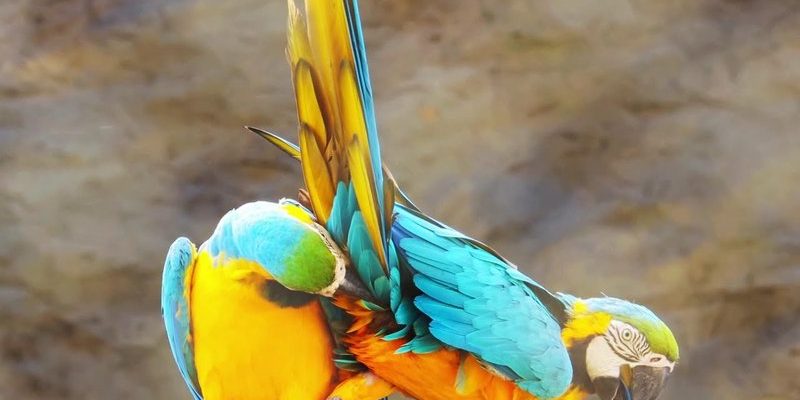
What’s really interesting about these macaws is how their relationships mirror some human behaviors. They don’t just choose a partner at random. Instead, they engage in elaborate rituals to bond, flirt, and ultimately choose a lifelong mate. Let’s explore the world of blue-and-yellow macaw courtship and see just how intricate and charming their mating dance can be!
Understanding Blue-and-Yellow Macaw Courtship
When it comes to courtship, blue-and-yellow macaws are known for their vibrant displays and social behaviors. The process starts with vocalizations—these birds have strong and expressive calls that can be heard from a distance. When a male wants to impress a female, he’ll often perform a series of loud, enthusiastic calls accompanied by body language that radiates confidence. Imagine him puffing up his feathers, tilting his head, and making eye contact, all while announcing his presence to the world.
Another key aspect of their courtship is mutual preening. This behavior helps strengthen their bond and shows the female that the male is attentive and caring. It’s like a gentle reminder that “Hey, I’m here for you!” As they preen each other’s feathers, it highlights their trust and affection. This social grooming not only helps them maintain their plumage but also reinforces their connection, making it an essential part of their ritual.
The Dance of the Blue-and-Yellow Macaws
One of the most notable parts of their courtship is the display dance. Picture this: a male macaw will enthusiastically flap his wings, twist his body, and sometimes even do a little hop while he calls out to the female. This dance is not just to show off; it’s a way to demonstrate his vitality and readiness to mate. It’s like he’s saying, “Look at me! I’m strong, vibrant, and ready for a partner!”
The female, in turn, often responds by mirroring his movements or engaging in her own playful antics. This reciprocal behavior creates an interactive performance that strengthens their bond. You might be wondering how they know what to do—well, these behaviors are instinctual and usually learned from their parents or older macaws in their group. It’s nature’s way of ensuring that these magnificent birds can communicate and connect effectively.
Building a Nest Together
Once a pair of blue-and-yellow macaws establishes their bond through displays and vocalizations, they start preparing for nesting. This crucial step follows their courtship rituals. These birds often choose tree cavities or crevices to build their nests, which provides a safe and secure place for their future offspring. It’s incredible how they instinctively know where to set up their home!
Both partners play a role in this process. The male usually does the heavy lifting by collecting materials, while the female inspects the chosen location. They work together to create a cozy environment for their eggs. This collaboration reflects their commitment to each other and to their future family—an essential trait for successful breeding.
The Mating Ritual
Now, let’s talk about the mating itself. After all the courtship and nest building, when the moment is right, the actual mating can take place. The male will often initiate this by continuing to woo the female with his calls and displays of affection. If she’s receptive, the two will engage in a brief series of mating acts that can be seen as the culmination of their courtship.
This part of their interaction is critical for reproduction. Blue-and-yellow macaws are typically monogamous, meaning they will stay with the same partner for life, which is a beautiful testament to their commitment. Their mating rituals are not just about reproduction; they’re about reaffirming their bond, ensuring that they are ready to face challenges together as a team.
Parenting Together
Once they successfully mate, the journey doesn’t stop there. Blue-and-yellow macaws are known for their dedicated parenting. The female usually lays two to three eggs, and both parents take turns incubating them. This nurturing aspect is vital, as it ensures the eggs remain warm and safe until they hatch.
After the chicks are born, the parents continue to work together to feed and protect their young. They communicate through a mix of vocalizations and body language, showcasing their teamwork. Raising chicks is a demanding job, but their solid foundation of courtship helps them navigate this journey more effectively.
Challenges in Courtship and Mating
Despite their fascinating rituals, blue-and-yellow macaws face various challenges in courtship and mating. Environmental changes and habitat loss can disrupt their natural behaviors. More so, if they are in captivity, their courtship rituals may look different due to stress or limited space.
You might be wondering how this impacts their ability to attract mates and raise young. When suitable habitats are lost, the chances of finding a partner decrease, which affects breeding rates. Conservation efforts are crucial in ensuring that these magnificent parrots can continue to court, mate, and raise their young in the wild.
The courtship and mating rituals of the blue-and-yellow macaw are nothing short of an avian love story. From their vibrant displays and harmonious vocalizations to their collaborative nesting and dedicated parenting, these birds illustrate the beauty of partnership in nature.
Understanding these rituals not only deepens our appreciation for these incredible creatures but also highlights the importance of their conservation. Just like us, blue-and-yellow macaws thrive on connection, commitment, and teamwork. By protecting their habitats, we allow their love stories to continue unfolding in the skies above.

